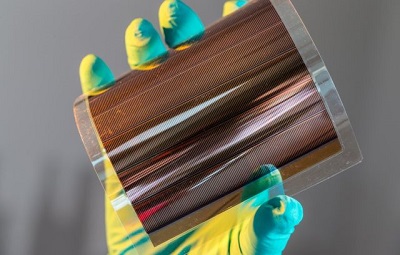 Friday, July 26, 2024
Friday, July 26, 2024  Friday, July 26, 2024
Friday, July 26, 2024 

Manufacturers have long used silicon to make solar panels because the material was the most efficient at converting sunlight into electricity.
But organic photovoltaics, made from carbon and plastic, promise a cheaper way of generating electricity.
This new study shows that organics can now be just as efficient as silicon.
The term organic relates to the fact that carbon-based materials are at the heart of these devices, rather than silicon. The square or rectangular solid solar panels that most of us are familiar with, require fixed installation points usually on roofs or in flat fields.
Click here to sign-up and receive the Weekly Round Up in your inbox every Saturday
Organic photovoltaics (OPV) can be made of compounds that are dissolved in ink so they can be printed on thin rolls of plastic, they can bend or curve around structures or even be incorporated into clothing.
In a word – efficiency.
This is a measure of how much of the sunlight that shines on a panel can be turned into usable electricity.
Commercial solar photovoltaics usually covert 15-22% of sunlight, with a world record for a silicon cell of 27.3% reached in this summer in the UK.
Organics have long lingered at around half this rate, but this year has seen some major leaps forward.
In April researchers were able to reach 15% in tests. Now this new study pushes that beyond 17% with the authors saying that up to 25% is possible.
This is important because according to estimates, with a 15% efficiency and a 20 year lifetime, organic solar cells could produce electricity at a cost of less than 7 cents per kilowatt-hour.
In 2017, the average cost of electricity in the US was 10.5 cents per kilowatt-hour, according to the US Energy Information Administration.
Watch our video and learn more about the benefits of joining Construction Links Network – the peer-to-peer network sharing platform for the construction, building and design community.
Press Releases | Project Updates | New Appointments | Awards & Milestones | Company News | New Products/Services | Brochures | Videos | Infographics | Blog Sharing | Events and More